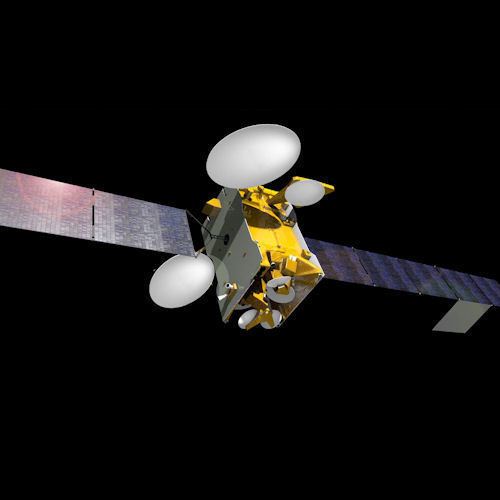Website SES-10 Page Power 13 kW Launch date 2017 Launch mass 5,300 kg Manufacturer Airbus Defence and Space | Operator SES Mission duration 15 years Launch site Cape Canaveral SLC-40 Launch mass 5,300 kg | |
 | ||
Similar JCSAT‑2B, Thaicom 8, SES‑9, Red Dragon, FORMOSAT‑5 | ||
Ses 10 satellite capability and key differentiator
SES-10, is a geostationary communications satellite to be operated by SES and is designed and manufactured by Airbus Defence and Space on the Eurostar E3000 platform. It will be positioned on the 67° West position thanks to an agreement with the Andean Community to use the Simon Bolivar 2 satellite network.
Contents
It will have a pure Ku band payload with 60 transponders to offer Direct-to-home broadcasting and enterprise and broadband connectivity. Its three wide beams will cover Mexico and the Caribbean, Brazil, and Spanish speaking South America.
After several delays, it is now tentatively slated to launch in late March, 2017 aboard a Falcon 9 Full Thrust, the first ever to re-use a first stage.
Ses 10
Satellite description
SES-10 is based on the three axis stabilized Eurostar E3000 satellite bus. It will mass around 5.3 t (5.8 tons), produce 13 kW of power and have a design life of 15 years.
It will use a hybrid approach for spacecraft propulsion, using bi-propellant propulsion for orbit raising and electric propulsion for station keeping. Its electrical system will use Hall-effect thruster with a Xenon regulator and feed system supplied by Airbus Safran Launchers. The same company supplied fourteen 10 N (2.2 lbf) S10-21 thrusters for the reaction control system, plus 17 pyrovalves and 13 fill and drain valves.
Its payload is composed of 60 Ku band transponders arranged in three wide beams. The first beam will cover Mexico, Central America and the Caribbean, the second beam will cover Hispanic South America, and the third beam will be dedicated to Brazil.
History
On February 20, 2014, SES S.A. ordered a new satellite, SES-10 from Airbus Defence and Space. It was to be built on the Eurostar E3000 platform, weight 5.3 t (5.8 tons), produce 13 kW of power and have a design life of 15 years. It would be positioned in the 67° West orbital slot, which belonged to the Simon Bolivar 2 registry belonging to the Andean Community. From there, it would offer an all Ka band to Latin American and the Caribbean.
On the same day, SES disclosed that they had contracted with SpaceX for launch services. While inititally thought to be launched aboard a Falcon Heavy due to performance limitations of the Falcon 9, it was clarified that it would, in fact, launch aboard the smaller rocket. At that time, it was believed that the launcher could only perform geosynchronous transfer orbit missions of up to 4,850 kg (10,690 lb), but SpaceX spokeswoman Emily Shanklin disclosed that the company had reserved 450 kg (990 lb) for its own use.
On August 30, 2016 it was announced that SES-10 would launch aboard a Falcon 9 full thrust rocket on the fourth quarter of 2016. It would be the first launch of a reused first stage of such rocket, using in this case the first stage of the 23rd flight of the Falcon 9. As is common with rocket launches, there have been several delays, and currently the launch is scheduled for late March, 2017.
